- News
- Reviews
- Bikes
- Components
- Bar tape & grips
- Bottom brackets
- Brake & gear cables
- Brake & STI levers
- Brake pads & spares
- Brakes
- Cassettes & freewheels
- Chains
- Chainsets & chainrings
- Derailleurs - front
- Derailleurs - rear
- Forks
- Gear levers & shifters
- Groupsets
- Handlebars & extensions
- Headsets
- Hubs
- Inner tubes
- Pedals
- Quick releases & skewers
- Saddles
- Seatposts
- Stems
- Wheels
- Tyres
- Tubeless valves
- Accessories
- Accessories - misc
- Computer mounts
- Bags
- Bar ends
- Bike bags & cases
- Bottle cages
- Bottles
- Cameras
- Car racks
- Child seats
- Computers
- Glasses
- GPS units
- Helmets
- Lights - front
- Lights - rear
- Lights - sets
- Locks
- Mirrors
- Mudguards
- Racks
- Pumps & CO2 inflators
- Puncture kits
- Reflectives
- Smart watches
- Stands and racks
- Trailers
- Clothing
- Health, fitness and nutrition
- Tools and workshop
- Miscellaneous
- Buyers Guides
- Features
- Forum
- Recommends
- Podcast
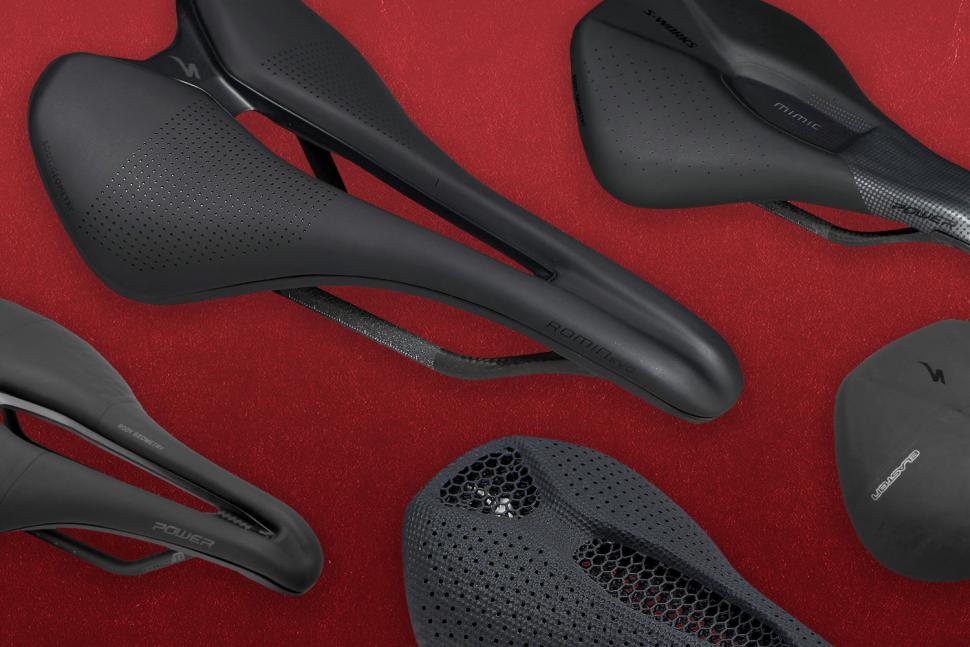 How to decide on the best Specialized saddle for your type of riding May 2021
How to decide on the best Specialized saddle for your type of riding May 2021How to decide on the best Specialized saddle for your type of riding

This article includes paid promotion on behalf of Specialized Bicycles
Saddle discomfort can ruin an otherwise great ride, and signs of numbness or pain can cause even more serious problems in the long term. It’s an important component to get right...
People comes in different shapes and sizes, that’s why there’s such a large variety of saddle designs—to accommodate us all. But with so many options, it can be tricky to narrow down your choice of the right saddle—one that suits your anatomy, the type of riding you do and your riding style. There’s saddle shape, nose length and cut out (or not) to consider, and with Specialized saddles, there are also different technologies—Mimic, Elaston and Mirror—that present different solutions for the type of discomfort experienced.
We sat down (virtually) with Specialized’s Saddle Product Manager Garrett Getter and Associate Product Manager Emma Boutcher to understand these considerations and the science behind recent saddle developments to send you searching in the right direction.
How do you ride?
As well as your personal anatomy, different riding positions affect where pressure is applied and this means different support focuses from the saddle are required.
Garrett explains: “When sitting in the commuter position you’re really upright. As you shift into an aggressive riding position, with a low front end, your pelvis rotates forward.
“If you have a long nose saddle you will run into a situation where you’re putting a lot of pressure where you don’t want to. But having a saddle with a wide channel allows you to sit as far forward and still have really good bone support.”
Sitting in the saddle you’re not glued to an exact position. Finding yourself sitting far forward on the saddle could be a positional issue or down to having the wrong saddle, Garrett says.
“If a saddle is too high, some riders will tend to sneak forward because that gives you more bend in your knee at the bottom of the pedal stroke. If the handlebars are too far away, riders also may just tease themselves forward to take some of the tension off an extended reach.
“But it could be that the saddle is too wide and the rider wants to sit further forward so that they don’t feel too much support—you can have too much support for sure.”
Noses: long or short?
“Traditionally saddles have been long-nosed, with a total length of 26-29cm,” Garrett notes. “Short-nosed saddles first came about to appease UCI regulations. These saddles allowed you to have the saddle further forward to get into a position that’s more aero, while also keeping your hips open.
“Watching riders, we noticed that the nose of the saddle showed. Riders weren’t sitting on the nose. This is where we saw the opportunity to go towards a short-nosed saddle, and so we launched the Power saddle.”
Garrett puts it matter-of-factly, “We just didn’t see a need to have 2-3cm of extra nose.
“With a longer saddle, you do end up having a little bit more real estate to move around. Even with a short nose saddle, you can move, it’s just not as much.”
How do cutouts make a difference?
“What’s interesting about the Power saddle is not only did we shorten the nose, but there’s also a really big cut out,” Garrett explains. This can be beneficial for relieving pressure in soft tissue areas.
“Sitting on the surface of the saddle you create pressure with the weight of your body. If you’re putting so much pressure through soft tissue, you’re making it go anaerobic—this means you are going really hard without any oxygen. For the tissue, if you do that for an extended period of time, you can damage and eventually kill it.
“The idea of having a cut out there is so you don’t have anything pushing back on that soft tissue. You are unsupported in the soft tissue areas and this helps protect all the nerves and arteries that run between your sit bones and it aids blood flow.
“Saddle design is all about soft tissue health. It doesn’t hurt the bones sitting on them for prolonged periods and so cutouts ensure you are just sitting on your pelvis.”
But this solution isn’t so effective for everyone, particularly women, which is why Specialized pushed the boundaries and came back with an alternative that it called Mimic technology.
What is Mimic technology?
Soft tissue health is incredibly important in saddle design and the fact that women vary a lot more than men do makes finding a comfortable and supportive saddle tricky.
This is a video on the science behind Mimic technology from a couple of years ago.
“The biggest question that women have with saddles is: do I need a cutout or do I not need a cutout?” Emma says. The answer could well be a Specialized saddle with Mimic technology. Instead of a cut out hole with sides that create a harsh edge, Mimic uses multi-layered materials to minimise soft tissue swelling and offer comfort. There’s no hole at all.
“Mimic technology was designed and recommended for women to mimic the soft tissue. When you’re in that forward riding position there is inherently going to be pressure and so we want to support that part of the body without causing any additional pressure or numbness that riders may feel with a cutout saddle,” Emma explains.
Even though the Power saddle and Mimic technology both originated from problems that were explained to Specialized by women, as the brand was bringing the products closer to market it found that they worked really well for men too.
“It’s really interesting that two of our biggest technology platforms were based on 100% input from women and turned into products that guys love,” Garrett says. “In some ways it makes sense. We’re trying to protect soft tissue health in both genders, it’s just way more important for women.”
“We want to make clear that when a man or woman goes to pick a saddle, they don’t have to choose a cutout or one with Mimic technology,” says Garrett.
Specialized’s Beyond Gender ethos applies to saddles.
“It’s not one size saddle fits you and one size fits you, it’s more complicated than that, and has a lot to do with your personal anatomy and your riding position,” says Garrett.
How can you find the right saddle for you?
Saddles need to be the correct width and shape to provide support to the appropriate areas so that relief can be given elsewhere for comfort.
“How can you work out which saddle you need? It is a complicated question to answer,” Garrett admits. “We are working on a more robust decision tree to help riders make that decision, but ultimately it comes down to letting people ride the saddle for five to seven days—that is the true test.”
Finding a shape of saddle that works for is very dependent on your riding experience. So alongside saddle design, Specialized ensures it has systems in place to support you in finding your saddle soulmate.
“It is a journey and so we offer a 30-day money-back return on all of our saddles. If you find that the saddle isn’t working, trade it in for a new one and get closer to finding the right saddle for you,” Emma says.
Garrett adds: “We know it’s not one size fits all so we want to make sure that riders are supported in that way.”
That said, Specialized has a pressure mapping tool that its design team uses to develop the saddles and it can also be used in-store to determine which type and width of saddle is best for you.
The Digital Sit bone Device (DSD) uses 768 pressure sensors to measure the width of your sit bones, with sub-millimetre precision, Specialized claims.
To assist with sizing when you don’t have access to a retailer with this device, Specialized has an online tool to guide you through a method you can follow at home to determine the correct width of saddle for you.
“On all of our saddle product pages under where you select your size is an option to find your size,” Emma says. “Click through and there’s a video that guides you through the cardboard method to measure your sit bones. Enter your sit bone width measurement on the site and this measurement is correlated to a recommended saddle size.
“This at-home method is on point with the results you would find in a store,” Emma says. “It’s a great way for somebody to determine their saddle width or to confirm which size Specialized saddle they should select.”
Also worth noting, measuring from the back of the saddle is a much better way to set up the position of a new saddle than measuring from the front, due to the varying nose length of different saddles.
What are the other Specialized saddle technologies?
“Once you have dialled in on your saddle width and shape, then we have options with different technologies. We have Mimic, Elaston and Mirror, and each has its own unique benefits, offering pressure relief or enhanced comfort for a particular type of discomfort experienced,” Emma notes.
We already touched on Mimic (above), which is an alternative to a cut out for relieving pressure in the soft tissue area. Then there’s Elaston...
“If you find yourself sitting in an upright position and can really feel your sit bones digging into the foam, and that’s unpleasant, then Elaston may be a great option for you,” Emma says. “It has softer, more receptive foam at the back of the saddle.”
The Elaston foam construction is made up of small beads that are expanded into the foam for greater comfort.
Specialized’s newest saddle technology is Mirror, and it involves 3D printing. The S-Works Power was the first saddle that Specialized adapted in this way.
“3D printing is the new frontier for us and it represents an amazing opportunity to make a better product,” says Garrett.
What’s so good about 3D printing?
“What’s unique about 3D printing technology is that there are no limitations in customisation. We can adapt and change the shape, the material’s density, the ride characteristics, pretty much infinitely,” Garrett says.
Instead of foam, liquid polymer is used to create this honeycomb structure, consisting of a matrix of 14,000 struts and 7,799 junctions, to provide more sit-bone comfort, while still ensuring blood flow and reducing pressure on soft tissue areas.
“With this technology, we can iterate a lot, and that’s what allowed us to get to a place where this product is above and beyond anything else we have in the market right now,” Garrett explains.
Iterating allows the team to test out theories, put these test saddles on riders bikes, receive feedback, and then keep on iterating.
Another benefit is that very specific foams in key anatomical places can be changed.
“Different variabilities in densities can be built into the saddle and this is done based on extensive research from all the pressure mapping data we have gathered over the years,” says Garrett.
Specialized used its Mirror technology to focus on providing superior sit-bone support that is matched with comfort.
Garrett explains: “We found we’ve done such a good job of making anatomically correct saddles, with cut-outs and good support in the sit bones, that in some cases we were creating another problem—almost too much support for the sit bones.
“A lot of riders with a really firm saddle to support the sit bones feel it. There’s this feeling of a peak concentrated pressure. That’s intentional. We want you to feel like you’re sitting on your sit bone and not on soft tissue. That’s the goal, always soft tissue health—but some sit bone comfort is also important.
“What’s unique about this saddle is that we’re able to make the area where your sit bone and rami [pubic bones] interact with the saddle a little bit softer. It was key not to do that all over the saddle, only in key places. Making this a little bit softer and allowing it to have a really fast rebound makes it feel like you don’t have as much pressure on your sit bones, even though you are really well supported. We found that taking some of that pressure off increases the level of comfort so much more.”
What’s next in saddle technology?
Mirror technology will continue to play a part in Specialized’s saddle range in the future, Garrett says. The real opportunity, he believes, lies in how the team can customise this product for different riders.
“We already personalise saddles a little bit, with different widths and more shapes. How can we make it more custom with Mirror technology? We’re still working through that.
“Everyone’s pelvis is different, soft tissue composition, how you sit on the saddle... all of it is different for everyone. “
There are lots of variables we are working through to figure out the best way forward but you’re going to see a lot more 3D-printed saddles. More widths and more shapes to start with and in the future more and more personalisation above and beyond what we already do.
“It’s a matter of what does the workflow look like from a shop. We need to decide on what the inputs are and whether the adaptions to that saddle are actually more comfortable. That’s the hard part and what’s also very important to do right."
Anna has been hooked on bikes ever since her youthful beginnings at Hillingdon Cycle Circuit. As an avid road and track racer, she reached the heady heights of a ProCyclingStats profile before leaving for university. Having now completed an MA in Multimedia Journalism, she’s hoping to add some (more successful) results. Although her greatest wish is for the broader acceptance of wearing funky cycling socks over the top of leg warmers.
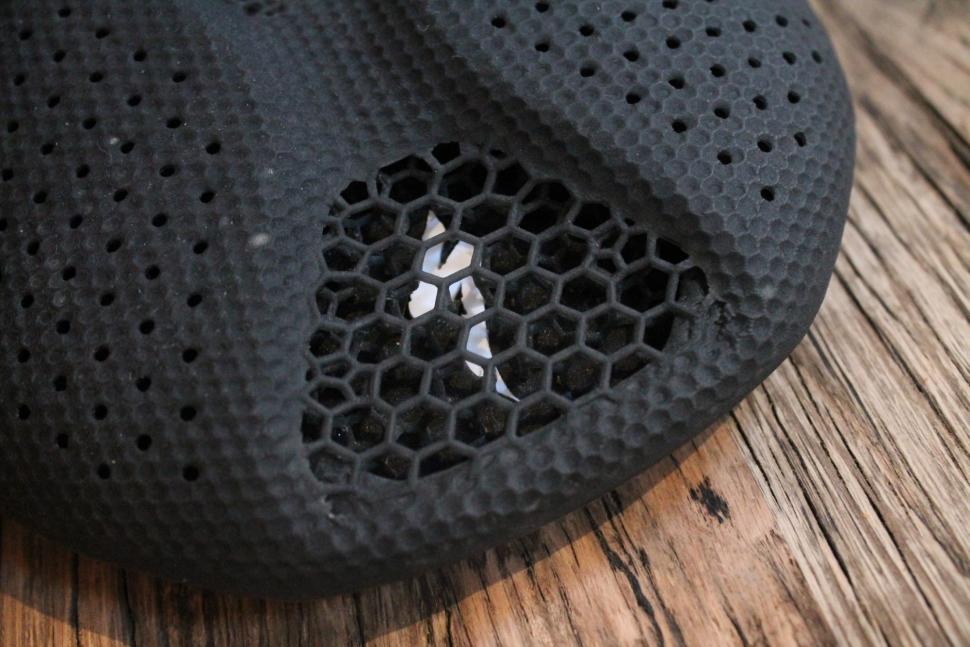
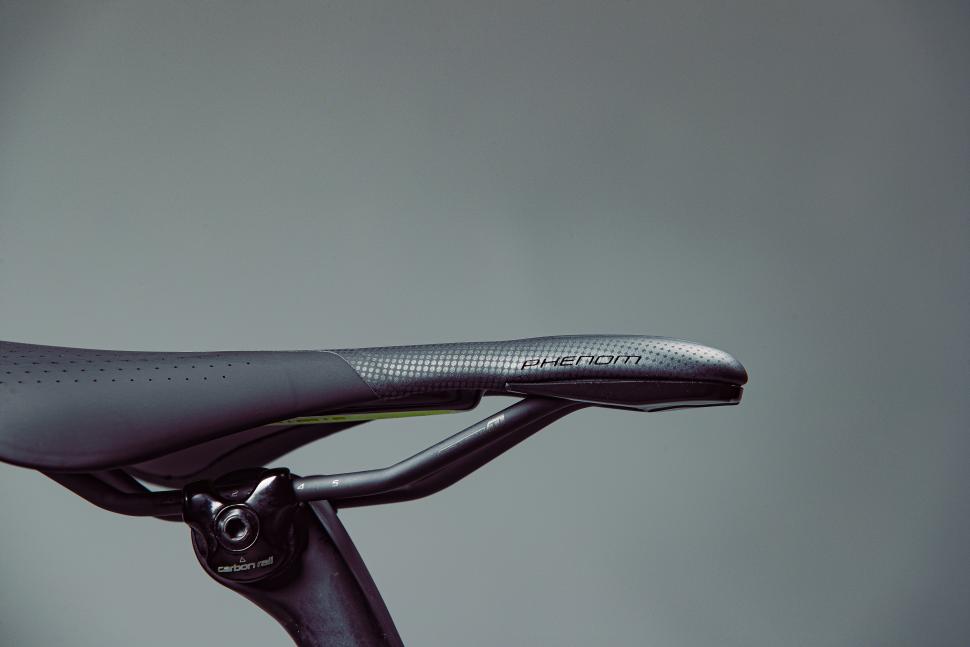

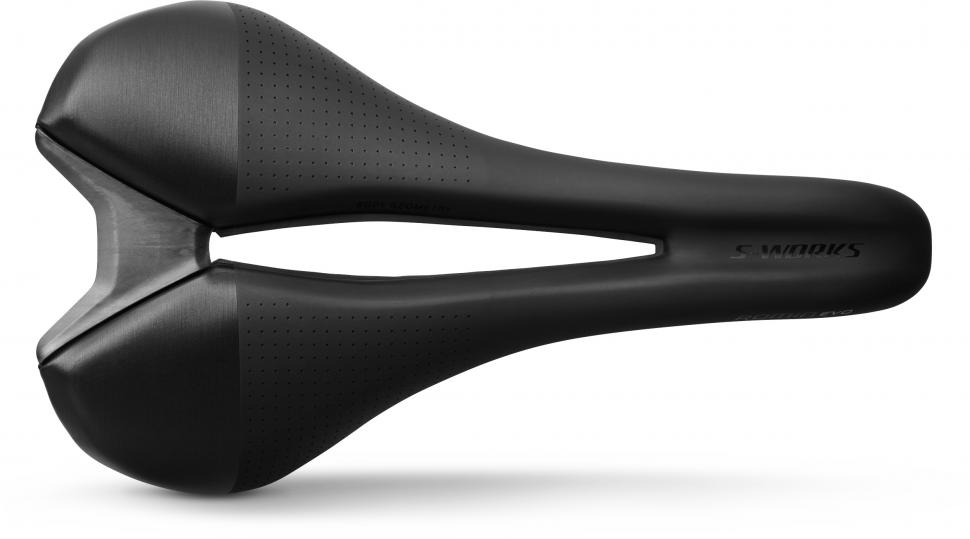




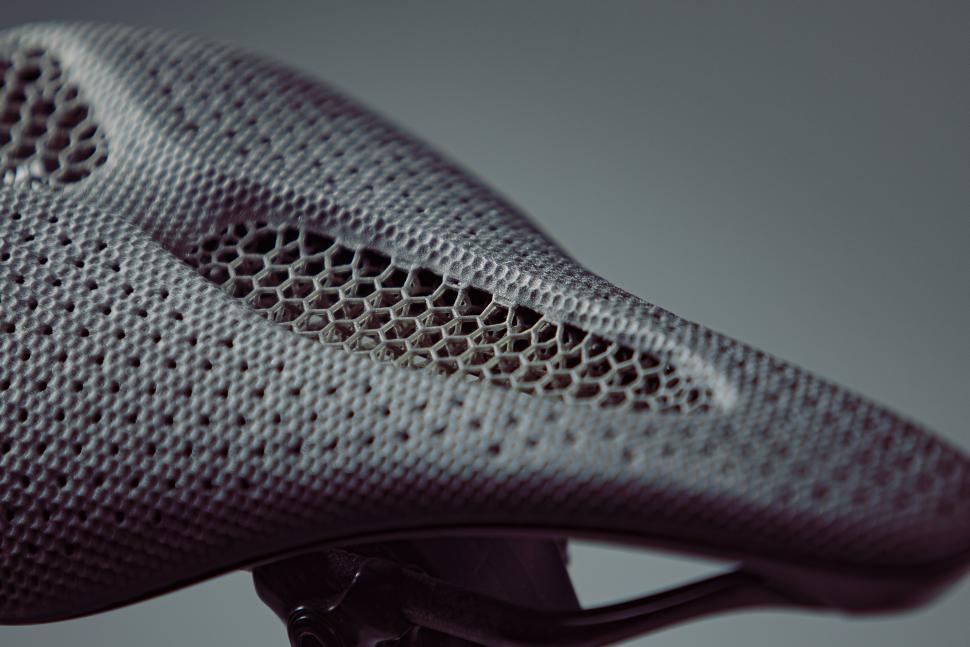
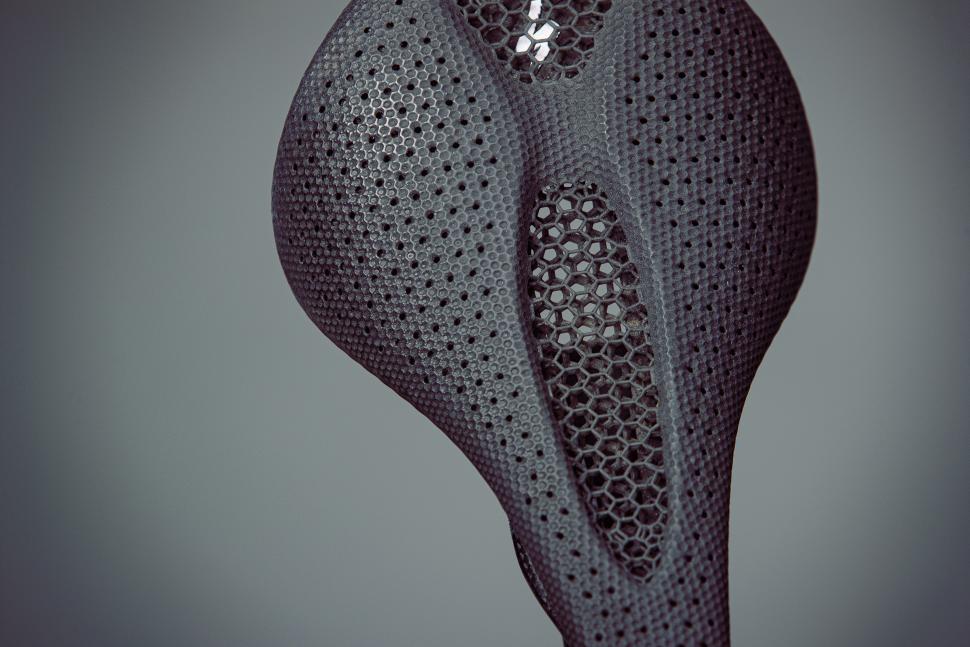
Yul Brynner was a lifelong liverpool fan who didn't wear aftershave <singing> Yul never wore cologne </singing>
Unfortunately for you, you previously claimed, back on page 1, "Average distance ridden by American cyclists per year, less than 50km." Per...
They almost certainly will; back in 2022, here in Dorset, we were due to host stage 7 of the Tour of Britain, and for the months preceding, the...
The way back ones don't count - he said 'in the last 20 years' (presumably the cycling equivalent of 'in the Premier League era') so it's only 2007...
Only mugs buy anything for the full retail price these days. They will soon be reduced to 299, just like the 1st gen. which went from 375 to 199 in...
How is it only an extra 56 minutes a day? That seems to imply either the road is very busy with vehicles, in which case it might not be delivering...
I've lived in Perthshire for seven years. You really should stay abreast of NZ politics - believe me, Scotland is a beacon of properiety in...
"Gloucestershire Live" headline on Facebook...you actually have to open the story to discover a car was involved and he didn't just misjudge a bend...
Next min we'll be hearing he's related to Ursula Von Der layen
The UCI bores strike again... once done a 1/2/3 cat race and even then then where truly unrelentless